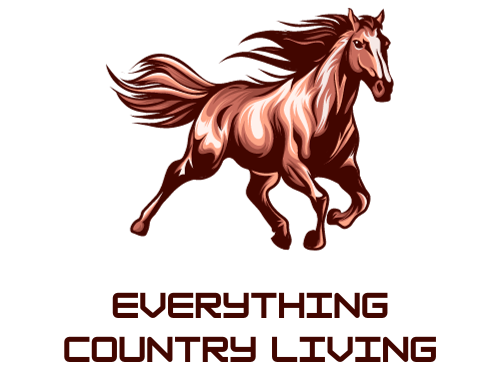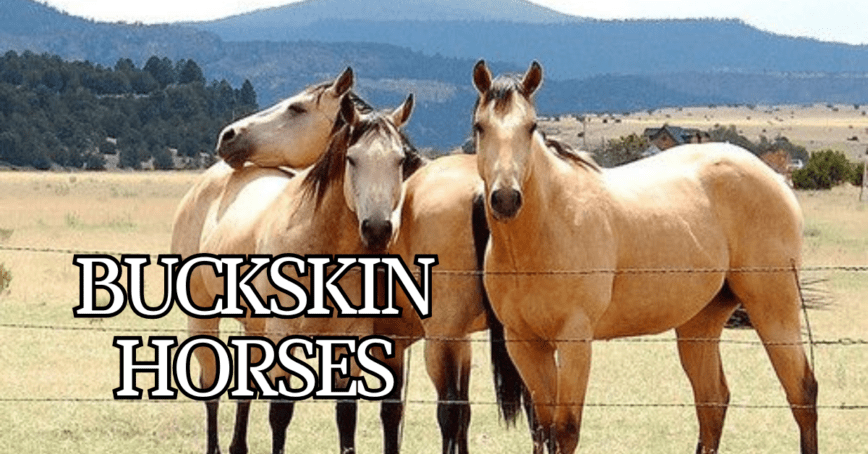
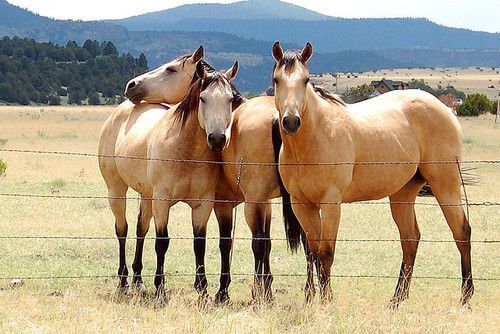
Buckskin horses are renowned for their stunning golden coats and rich history. In this blog post, we delve into the fascinating world of buckskin horses, exploring their origins, characteristics, and significance in the equestrian world. Whether you’re a seasoned horse enthusiast or new to the equine scene, join us on this journey to discover the beauty and allure of buckskin horses.
This color is admired for more than its beauty; buckskin horses are also valued for their hardiness and strength. I have always admired buckskin horses. I have had the pleasure of owning a a few buckskin horses in my life and they were great horses. They were friendly and easy keepers. As a passionate horse lover and owner, my interest in Buckskin horses has led me to want to learn more about these beautiful animals.
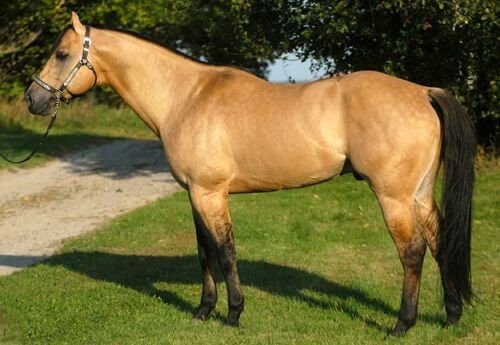
So, let’s dive into the fascinating world of Buckskin horses and explore their history, genetics, and some fun facts.
How Buckskin Horses Got Their Name
Buckskin horses are known for their beautiful and unique golden color with black manes and tails, The name “buckskin” comes from the deer hide clothing worn by early American settlers and Native Americans. These horses have a long history, possibly tracing back to Spanish horses brought to America in the 1500s and later bred with other European and wild horse breeds.
History of Buckskin Horses
Buckskins have a rich history and have existed for centuries, possibly having a Spanish origin originating from the Sorraia horse breed in the 1500s.
Many buckskin horses have Spanish origins, as the Spanish were fond of breeding golden horses during the Middle Ages.
Breeds of Horse that are Buckskin
Buckskin horses are somewhat rare making up about 6% of the Quarter Horse population they are seen across various horse breeds.
Specific horse breeds display the buckskin color, including Welsh Ponies, Cobs, Tennessee Walking Horses, Peruvian Pasos, Morgans, Mustangs, Lusitanos, Andalusians, and American Quarter Horses.
Buckskin Genetics
Buckskins have a unique coat color as a result of a dilution gene, which lighten their dark coat color and make their black points more visible, creating a distinct pattern.
The cream gene is responsible for lightening the coat color of buckskin horses.
The most common way to get a buckskin foal is to breed a bay with a palomino horse. This will often result in a buckskin but not always. Breeding a bay with a cremello will result in a buckskin 100 percent of the time.
Different Colors of Buckskin
Buckskin coloring typically have black points and a cream-colored body, varying in shades.
Buckskins come in various shades, from light buttermilk to sooty, and silver buckskins.
Buckskin horses do not have blue eyes due to their genetic makeup. They have brown or amber eyes.
A buttermilk buckskin is a light creamy color. It is the lightest in the range of buckskin colors it is the color people associate buckskins with.
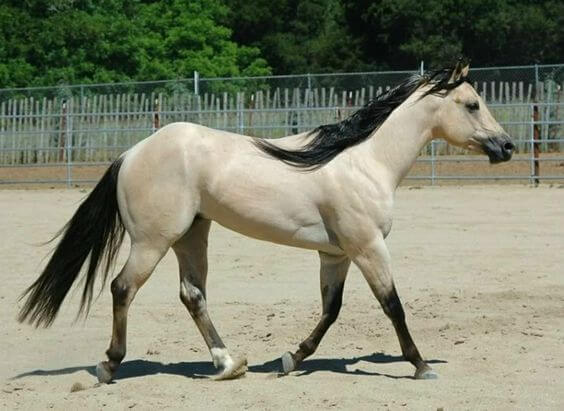
Sooty buckskins have a darker coat color. A sooty horse coat color is characterized by black or darker hairs mixed into a horse’s coat, typically concentrated along the topline of the horse and less prevalent on the underparts. The effect is especially pronounced on buckskins and palominos.
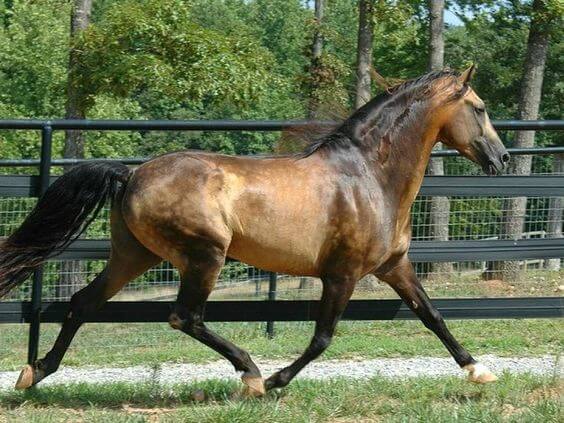
Silver buckskins have interwoven light gray hairs. They have black points on legs, ears and mane. They have more of a grey appearance but have the buckskin genetics.
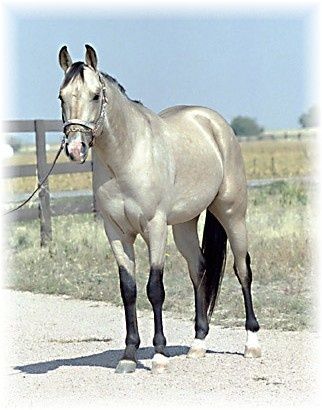
The International Buckskin Horse Association
The International Buckskin Horse Association (IBHA) was established in 1971 to register buckskin, grulla, and dun horses. The American buckskin registry association registers horses of any breed that are buckskin and hosts competitions in many different events.
The Difference Between a Dun and a Buckskin
Unlike dun horses, buckskins do not have primitive markings like leg barring and dorsal stripes, although there are exceptions.
Dun and buckskin horses often get confused due to their similar coat colors, but specific genetic factors and unique markings distinguish them. Here’s a breakdown to clarify the differences:
Dun: The dun factor gene dilutes the base coat color, adding distinctive “primitive” markings such as a dorsal stripe, leg barring, and sometimes shoulder stripes. The dun gene affects all base colors.
- Typically, they have a diluted coat color ranging from yellowish to reddish-brown, depending on the base color.
- Always have a dorsal stripe running down the spine, from the mane to the tail.
- It may have leg barring (zebra stripes on legs) and shoulder stripes.
Buckskin: Buckskin color results from the action of a single cream dilution gene on a bay base coat, lightening the coat to a golden color but leaving the mane, tail, and lower legs dark. It does not produce the primitive markings seen in duns.
- Have a golden tan coat with a black mane, tail, and lower legs (black points).
- They do not have the dorsal stripe or other primitive markings characteristic of dun horses unless they also carry the dun gene.
Grulla Horses Compared to Buckskins
Grulla, also called black dun, gray dun or mouse dun, is a color of horses in the dun family, characterized by tan-gray or mouse-colored hairs on the body, often with shoulder and dorsal stripes and black barring on the lower legs. The genotype for grulla horses is a black base with dun dilution. Buckskins are bay horses with a cream dilution gene.
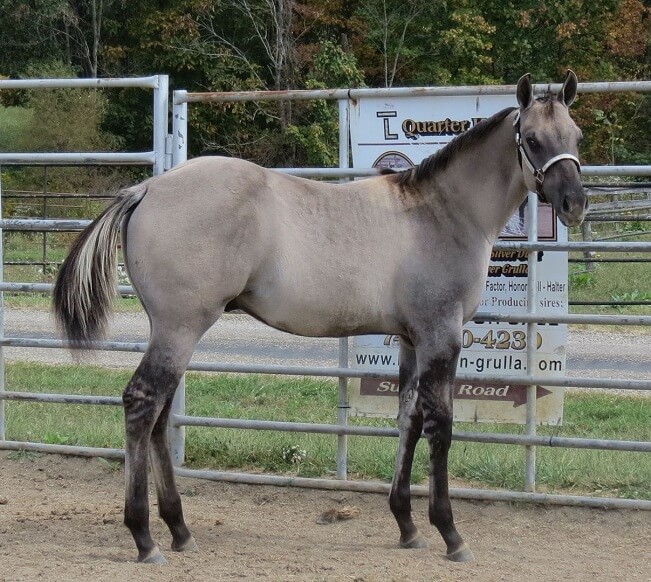
Famous Buckskin Horses in Hollywood
Buckskins have been featured in many Western TV shows and movies. Buttermilk was Dale Evans’ mount in The Roy Rogers Show. Spirit is the animated star of the movie Spirit: Stallion of the Cimarron. Denny was Jim’s horse in The Man from Snowy River. Ben Cartwright’s horse on Bonanza was Buck and Trampas’ horse on The Virginian was named Buck also. Cisco was a Quarter Horse who starred in the 1990 film Dances with Wolves.
Cowgirl Western Culture:
- Buckskins embody the rugged spirit of the American West.
- In modern Western horse sports, they continue to showcase their skills and beauty, from ranch work to barrel racing.
- buckskin quarter horses are stock-type horses that are popular with cowboys and cowgirls in rodeos because of their muscular build and striking appearance.
Fun Facts
In some regions like Northern Europe, buckskins are less popular in English disciplines but are versatile for various activities like pleasure riding, racing, and working cattle.
Buckskins gained attention for their beauty after viral videos in 2015, although beauty is subjective in the horse world.
Buckskins are typically smaller horses, ranging from 13 to 15 hands high.
Questions People ask about buckskins:
What breed of horse is a buckskin?
Buckskin is not a distinct breed but a color of horse. Buckskins are found in many different horse breeds.
What is the difference between dun and buckskin horses?
Dun and buckskins often get confused because they have a similar coat color. However, buckskins don’t have dorsal stripes, leg stripes (barring), or shoulder stripes that duns sometimes have.
What is the difference between a bay and buckskin horses?
A bay horse has a reddish-brown or brown body color with a black point coloration on the mane, tail, ear edges, and lower legs. In contrast a buckskin has a golden tan coat with a black mane, tail, and lower legs (black points).
Do all buckskins have black legs?
Yes, all buckskin horses have black legs. A buckskin horse has black points on its legs, ears, tail, and mane. Their body coat ranges from cream to dark tan in color.
Buckskin Horses Conclusion
I hope you enjoyed learning all about these beautiful horses. The buckskin horse is an exceptionally beautiful horse and they excel in many riding events. If you’re a fan of buckskins, share your thoughts in the comments below!
Other related posts you may like:
The Cremello horse – Amazing Photos and Facts
Find Out How Long Horses Carry Their Young (foaling facts)
First Time Horse Owner – Ultimate Guide to Buying a Horse
